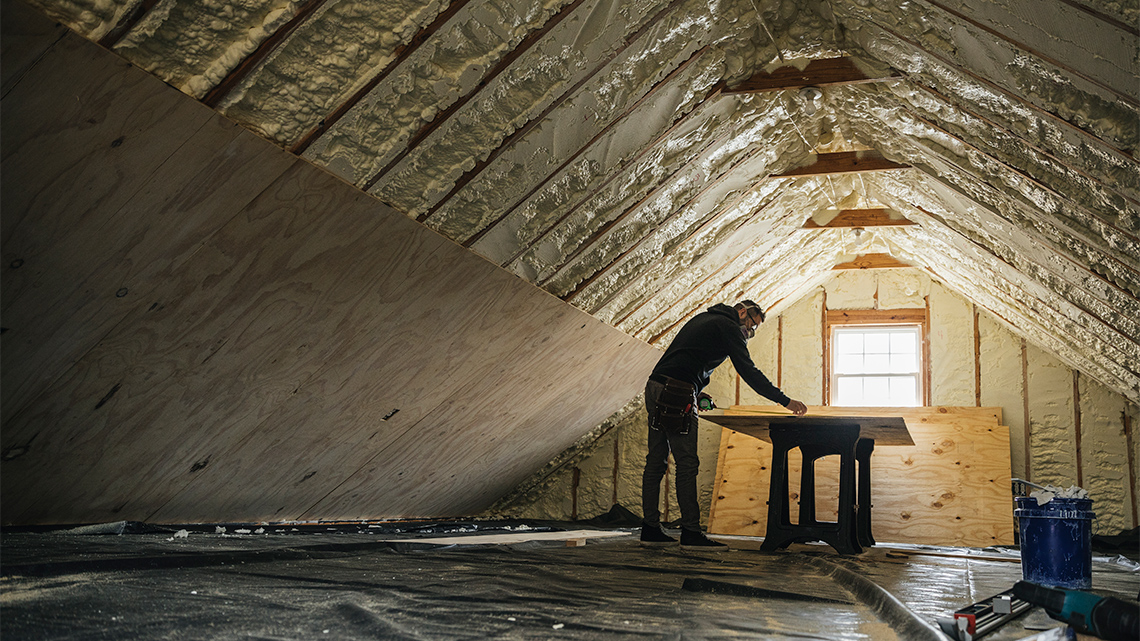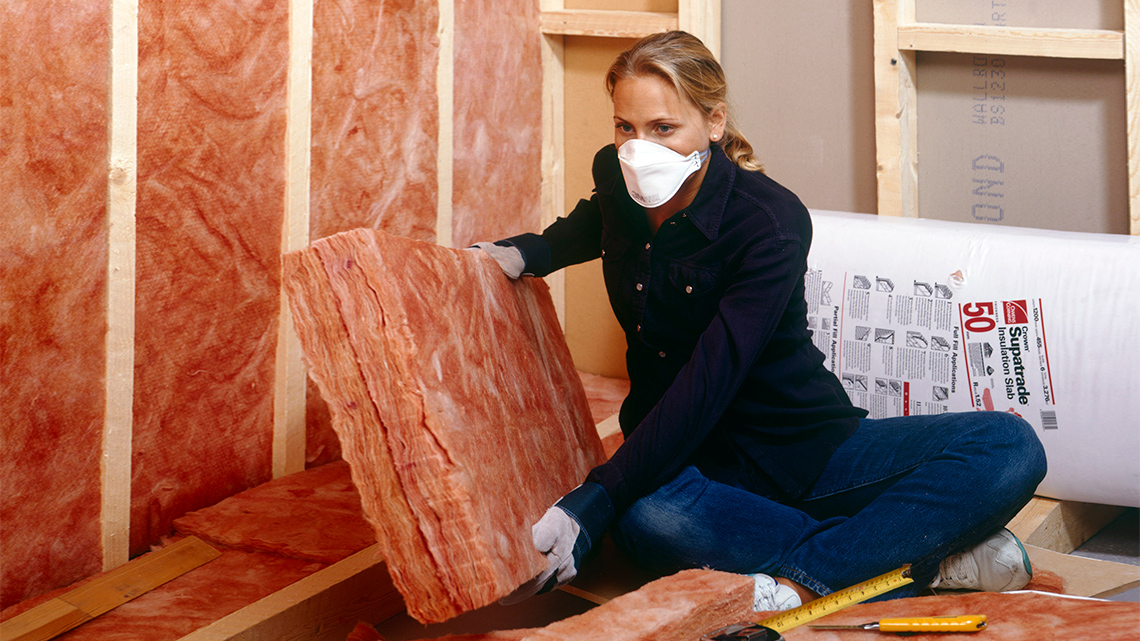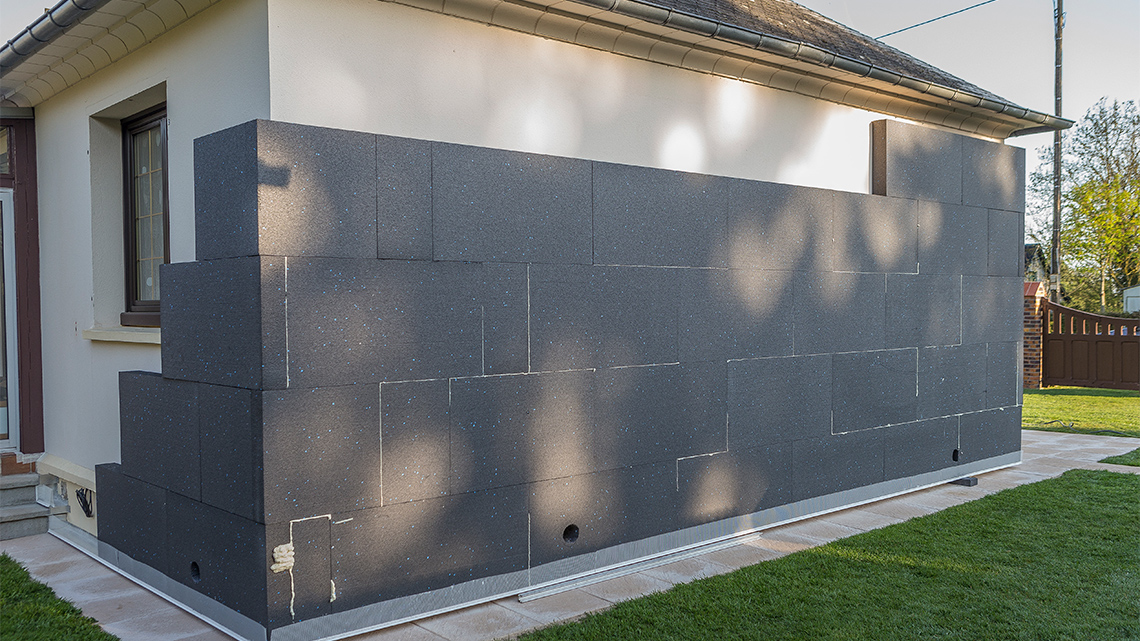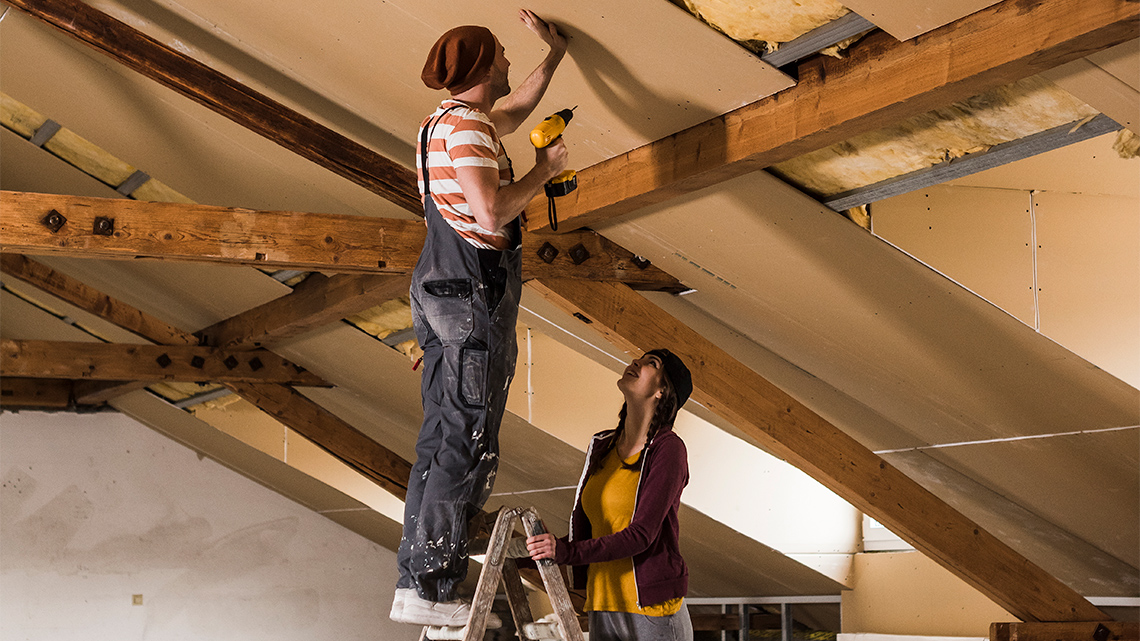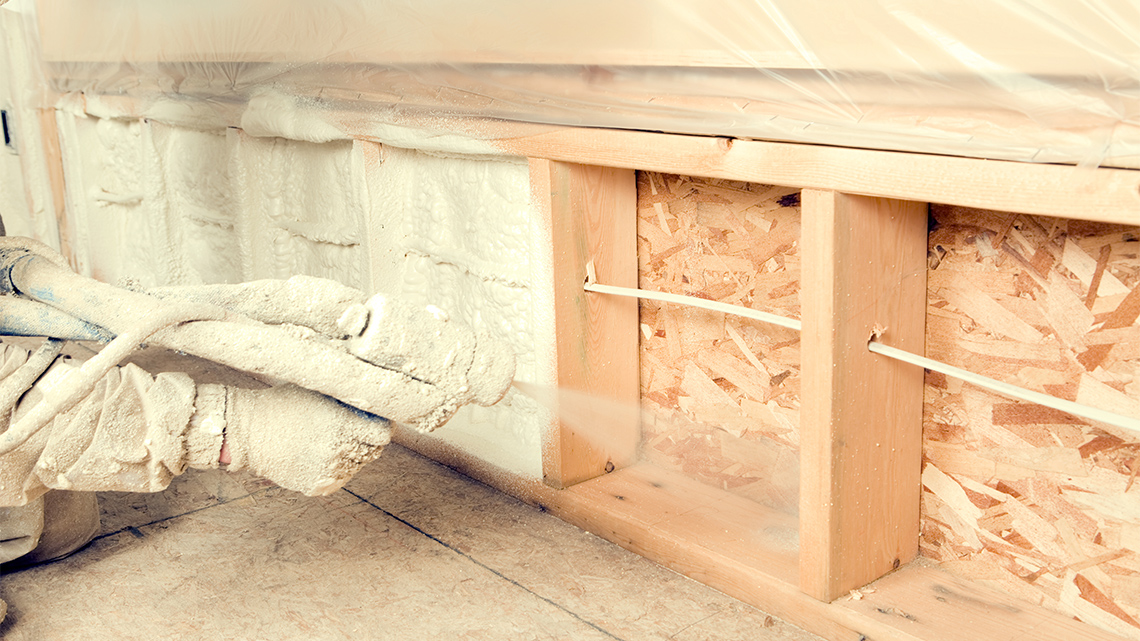Minds On
Insulation
Explore the following images to discover different forms of insulation.
Brainstorm
Brainstorm
- What does insulation do?
- How does the insulation keep a building warm or cool?
- Have you noticed insulation used in other places, for other purposes?
Record your ideas in a notebook or another method of your choice.
Action
Heat transfer
Engineers, contractors, and clothing designers take insulation into account in the design and construction of many different buildings and types of clothing.
Engineers create products that prevent the transfer of heat through convection, conduction, and radiation.
Press the following tabs to access the key terms.
For convection, the heat is transferred by the energy of the hotter particles (which have higher energy) moving away from a heat source and bringing the heat that they have gathered from that heat source with them.
Convection can only happen in the case of fluids (liquids and gases) because the particles within them are free to move about in the space.
In a closed space, the currents circulate around the space, transferring the heat because they are distributing the warmed particles around this space.
An example of this is heating water in an electric kettle.
For conduction, energy is being passed from a hotter particle (which has higher energy) to the particles surrounding it through collisions.
In a solid, the particles cannot move so they cannot move around the space, so the heat is transferred easily from one particle to another.
An example is frying items in a pan. The heat moves from the element on the stove to the pan and then to the food inside the pan.
If a substance conducts heat easily, they are called conductors.
Those that don’t conduct heat are called insulators.
Radiation is heat being transferred through electromagnetics.
The hot objects produce and discharge infra-red radiation in the form of rays, waves, or particles, which heats up any matter that absorbs this radiation. This works best with black surfaces because they absorb infra-red radiation the best.
The heat that is emitted from the Sun travels to Earth as radiant energy.
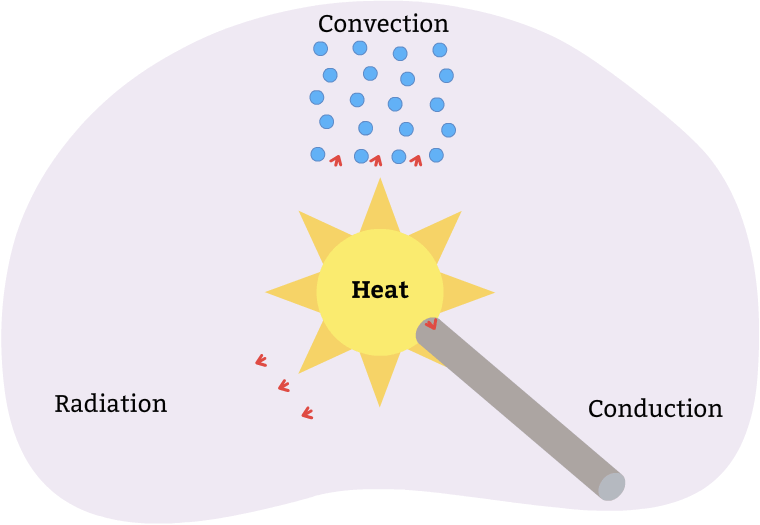
Yellow sun labeled Heat, red lines moving upwards through a series of blue particles. Blue particle turn red as the red lines go through them, labeled convection. Red lines moving down to the left, labeled convection. Red lines moving down to the right through a gray cylinder, labeled conduction.
Insulation
Engineers want to prevent cold air from entering a building during the winter, and they want to prevent cold air from exiting a building during the summer. Thermal insulation reduces the heat transfer between objects.
A material that does not let heat or electricity travel through it easily is called an insulator.
In most situations, engineers want to trap heat and slow down its flow. Plastic, rubber, wood, and ceramics are good insulators
Developing products that include insulation is important in engineering, especially in the fields of mechanical, chemical, and biological engineering.
Materials and insulators

For this section of the learning activity, you may choose to explore one or both of the following options:
- Option A: investigate what materials make good insulators
- Option B: design your own experiment about what materials make good insulators
Before determining which option you would like to complete, check out the following video.
Explore this video to learn more about the steps of the Scientific Experimentation Process.
Investigate
Option A: Investigate
There are various materials that are used as insulators. In this option, you will be investigating which materials allow less transfer of heat, acting as insulators.
Complete the Insulators: Hypothesis, Observations, and Conclusions in your notebook or using the following fillable and printable document. If you would like, you can use speech-to-text or audio recording tools to record your thoughts.
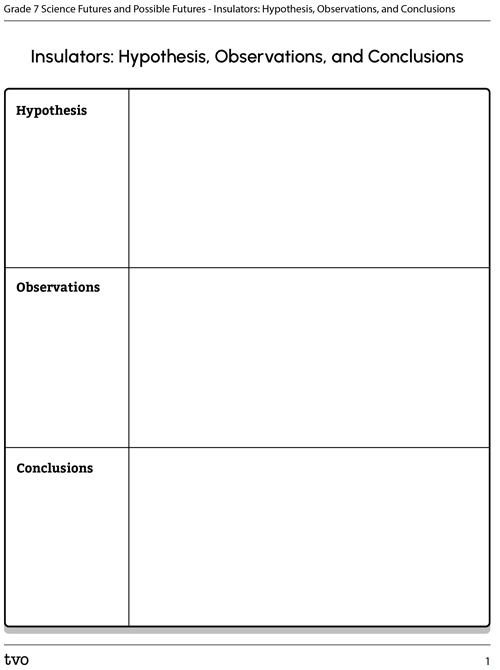
Press the Activity button to access Insulators: Hypothesis, Observations, and Conclusions.
Activity (Open PDF in a new tab)Press the following tabs to access the various steps for this investigation.
There are four different materials being tested as insulators:

- paper towel
- cotton balls
- polyester stuffing
- aluminum foil
The goal of the experiment is to put each material packed tightly into the bottom of a jar, and then place an ice cube on top of the material.
The jars will all be placed on a hot plate and heated up.
You will observe which ice cubes melt the fastest versus, and which ones do not melt as fast. The ice cubes that don’t melt quickly have an effective insulator underneath that isn’t letting the heat transfer through to the ice cube.
Begin by making a hypothesis.
A hypothesis is a possible answer to a question, or an explanation that accounts for all the observed facts and is testable.
Which material do you think will be the most effective insulator? Why do you think this?
As you formulate your predictions, consider the following.
I can make a prediction by…
- thinking about what I already know about insulators and heat transfer
- explaining what I think will happen with lots of detail
Record your predictions (or hypothesis) in the following organizer, Insulators: Hypothesis, Observations, and Conclusions, or another method of your choice.
Now, let’s access the following video the investigate this experiment.
As you are exploring, pause the video, and note your observations using the following organizer, Insulators: Hypothesis, Observations, and Conclusions or another method of your choice.
Check out this video entitled Insulation Materials Investigation to explore the insulating properties of the various materials used in this experiment.
The source of this material is the TeachEngineering Digital Library at www.TeachEngineering.org. All rights reserved.
Complete the Insulators: Hypothesis, Observations, and Conclusions in your notebook or using the following fillable and printable document. If you would like, you can use speech-to-text or audio recording tools to record your thoughts.
Observations
As you make your observations, consider the following.
I can make observations by…
Conclusions
Based on the observations you made as you explored the preceding video, draw conclusions by responding to the following questions:
- Based on this investigation, which material ended up being the most effective insulator? How do you know?
- What material was the least effective? How do you know?
- What conclusions could an engineer draw from this experiment when considering materials to use as insulators?
- How might you improve this experiment?
- What other material might you have tested?
Record your conclusions in a notebook or another method of your choice.
When you’re ready, press ‘Let’s Check!’ to access the conclusions.
Based on this investigation, the paper towel was the most effective insulator, followed by cotton balls, as their ice cubes melted the slowest.
Aluminum foil was the less effective insulator because the ice cube melted more quickly.
An engineer might consider materials similar to paper towel, or folding over a thinner material to make it thicker.
Try It
Option B: Your turn!
Your task is to design your own experiment that will determine the effectiveness of various types of insulators, or one type of insulator.
Press ‘Hint’ to access a few starting ideas.
For example, you could design an experiment that tests different mugs or travel mugs to explore which is the best insulator.
Design your experiment following the steps outlined in the following organizer.
Complete the Insulators: Designing An Experiment in your notebook or using the following fillable and printable document. If you would like, you can use speech-to-text or audio recording tools to record your thoughts.
| Purpose | What question are you trying to answer through your investigation? |
| Materials needed | What materials and equipment are needed? |
| Safety considerations | What should someone consider for safety before they begin, and during the experiment? (Hint: Eye protection, gloves, be careful around heat, etc.) |
| Procedure | What steps or instructions will you provide for the experiment? |
| Observations | How do you recommend recording observations? |
| Conclusion | What questions would you ask to draw conclusions? |
Press the ‘Activity’ button to access Insulators: Designing An Experiment.
Future impacts
This learning activity connects new and existing approaches for young scientists to create positive changes in their communities.

The future of insulation
Sustainable insulation technologies are always being developed, tested, and designed to reduce costs and increase energy efficiency and sustainability.
We will explore a few options that will be the future of insulation.
In the graphic organizer provided, outline the costs and benefits of each new technology.
Complete the Future of Insulation: Costs and Benefits in your notebook or using the following fillable and printable document. If you would like, you can use speech-to-text or audio recording tools to record your thoughts.
| Technology | Benefits | Costs |
|---|---|---|
| Aerogels | ||
| Metal clothing | ||
| Micro-tube insulators |
Press the ‘Activity’ button to access Future of Insulation: Costs and Benefits.
Press the following tabs to learn more about the future of insulation technology.

Aerogel technology has been designed as an alternative for insulation, which promises to save buildings and companies thousands of dollars in heating and cooling. Aerogels are extracted from gel and then dried out, creating the world’s least dense solid.
This low density means they have a low heat transfer and take minimal energy to produce, which reduces harmful effects on the environment. However, Aerogels are quite expensive and risky to produce. Aerogels easily irritate the eyes, skin, respiratory tract, and digestive system, making them difficult to both produce and use.

Metal could possibly be the future of insulating and heating clothing. Metal nanowire clothing can conduct electricity when connected to a battery. Some people are worried you could get electrocuted by the battery; however, the amount of electricity required would be so small that this wouldn’t happen.

Micro-tube insulators use manufactured carbon nanotubes to create thin, wearable fabrics, films and even modeled parts. They are microscopically small and excellent insulators due to their hollowness that traps air, which allows for less bulk and more warmth. Unfortunately, the cost to produce microtube technology is high which makes it impractical for consumers.
When you’re ready, press ‘Let’s Check!’ to access possible costs and benefits of various insulation technologies.
| Technology | Benefits | Costs |
|---|---|---|
| Aerogels |
|
|
| Metal clothing |
|
|
| Micro-tube insulators |
|
|
Connections
Connections
Careers
Insulation workers, also called insulators, install and replace materials that are used to insulate material buildings or mechanical systems.
Their day-to-day work involves:
- removing and disposing old insulation
- reading/interpreting drawings and specifications to determine insulation requirements
- selecting the type and amount of insulation required for each job
- measuring and cutting insulation to fit into walls and around pipes
- securing insulation with staples, tape, or screws
- installing vapour barriers and finishes to insulated surfaces to protect from moisture
Safety considerations
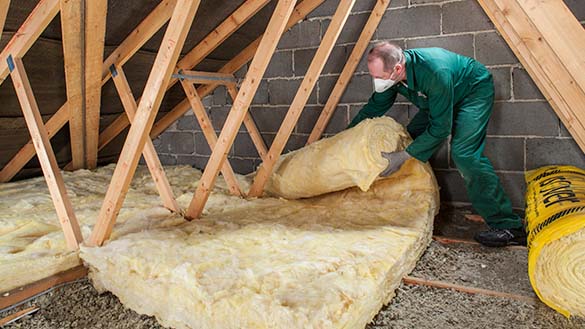
Insulators often need to remove old insulation, which can be dangerous.
Some older insulations include asbestos, which is known to cause sickness and even cancer. Insulators may also experience injuries from their tools, such as, knives, drills, trowels, scissors, and staple guns.
To stay safe, insulators must work in well-ventilated areas and follow employer safety recommendations, including wearing protective equipment.
Student Success
Let’s think!
- What are some of the different tasks that an insulator has to do?
- What is one thing that surprised you about this career?
Record your ideas in a notebook or another method of your choice.
If possible, share your ideas with a partner.
Consolidation
Learning check!

Think about what you have learned about insulation and heat transfer, then respond to the following questions.
Select the correct answer, then press ‘Check Answer’ to see how you did.
Pause and Reflect
Pause and reflect
Reflecting on what we’ve learnt throughout this learning activity, respond to the following:
- Why is it important to consider insulation materials when designing and building structures and clothing?
- Describe what the three types of heat transfer are.
Record your ideas in a notebook or another method of your choice.
Reflection
As you read the following descriptions, select the one that best describes your current understanding of the learning in this activity. Press the corresponding button once you have made your choice.
I feel…
Now, expand on your ideas by recording your thoughts using a voice recorder, speech-to-text, or writing tool.
When you review your notes on this learning activity later, reflect on whether you would select a different description based on your further review of the material in this learning activity.
